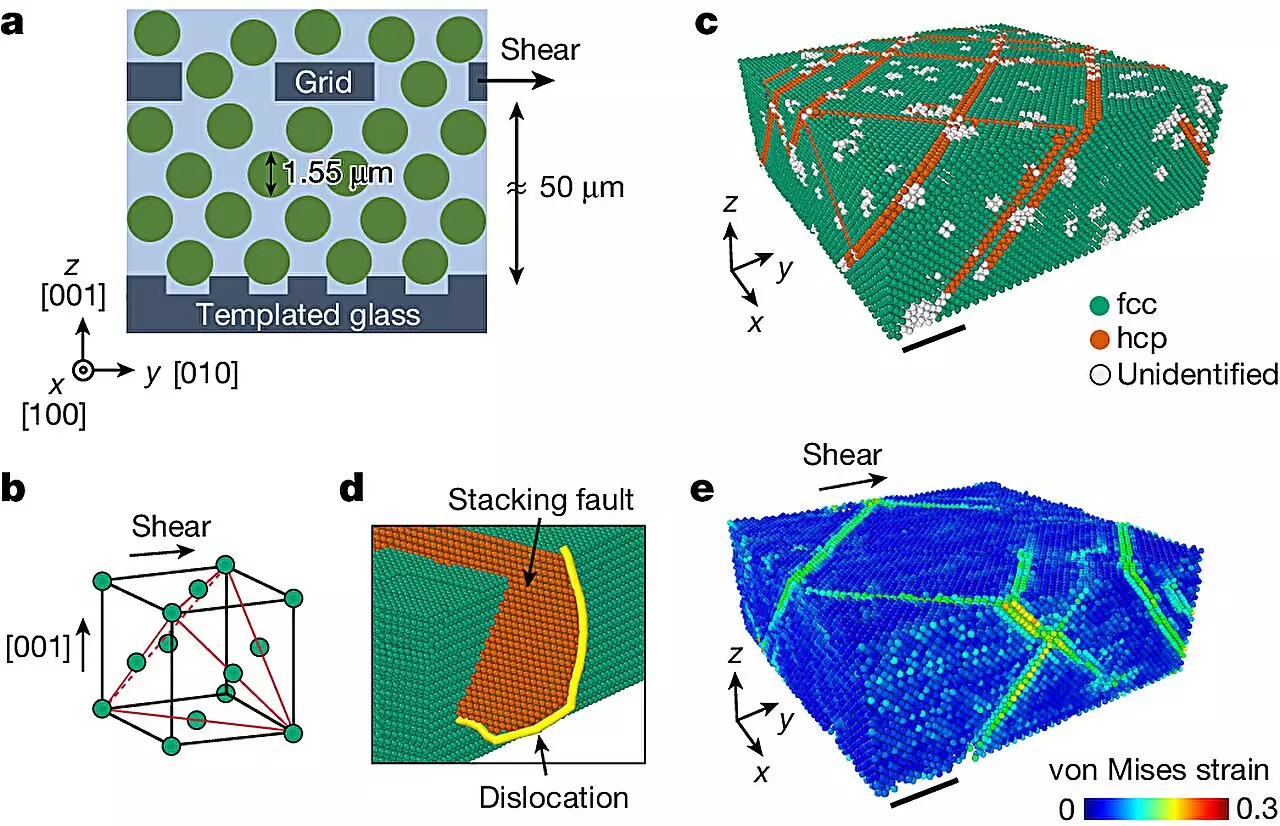The field of metallurgy has a rich history that dates back to the Bronze and Iron Ages when early blacksmiths first discovered an important characteristic of metals: deforming them through bending and hammering can significantly enhance their strength. This phenomenon, known as work or strain hardening, has stood the test of time and remains a foundational principle in modern manufacturing processes. Its applications span a vast array of industries, influencing everything from car manufacturing to the development of aerospace components. However, until recently, scientists faced a major challenge; they lacked the ability to observe this critical process in real time.
Recent research conducted by a team from the Harvard John A. Paulson School of Engineering and Applied Sciences (SEAS) has successfully captured the intricate details of work hardening as it occurs. This groundbreaking study, presented in the prestigious journal Nature, has revealed new insights into the microscopic mechanisms that govern how materials gain strength through deformation. The research was enabled by advanced observational techniques that allow for unprecedented examination of structural changes in materials during real-time deformation.
Professor Frans Spaepen, a leading figure in the study, emphasized the importance of understanding the fundamental mechanics behind work hardening for improving material modeling processes in industries that rely on precise structural integrity. Currently, extensive computer models simulate these transformations, but integrating more empirical evidence remains critical for enhancing predictive accuracy. Spaepen’s research thus offers a promising avenue toward refining material design and engineering processes.
Historically, capturing the action of work hardening in metals has posed significant difficulties due to the limitations of traditional observation methods. Typically, researchers could only scrutinize the atomic structure through high-resolution electron microscopy, which offers a snapshot of the state before and after deformation but fails to reveal the dynamics in between. Consequentially, prior discoveries elucidated the role of dislocations—defects in the crystalline structure—that contribute to increased hardness but lacked clarity on the complex interplay of these defects during work hardening.
To bridge this knowledge gap, the Harvard research team turned to an unorthodox model: colloidal crystals. These crystals consist of particles that are massively larger—around 10,000 times the size of atoms—and can form ordered structures at high concentrations. The decision to employ colloidal crystals stems from their ability to replicate the same defect structures and phase transitions seen in atomic materials, making them ideal subjects for investigation, albeit their soft nature.
In a notable experimental setup, the researchers created these colloidal crystals from an extraordinarily high number of particles and employed a confocal optical microscope to monitor particle motion as stress was applied. What came as a surprise was the remarkable work hardening exhibited by these colloidal structures. The findings indicate that when considering the scale of particles relative to those in traditional metals, the colloidal crystals demonstrated exceptional strength enhancement that surpassed that of widely-utilized metals such as copper and aluminum.
Seongsoo Kim, a co-first author of the paper, shared astonishment at the ferocity of the observed work hardening, stating that the simplistic interactions between particles defied expectations. The research demonstrated that despite their relative softness, these colloidal materials could harden significantly due to their geometric configuration and the interactions of dislocation defects.
The implications of this research extend far beyond the realm of colloidal crystals. The discovery that fundamental mechanisms of work hardening can be observed across different materials opens new pathways in material science. By revealing how particles interact and become entangled, the research underscores the universality of the work hardening process. The findings suggest that similar principles could apply to various materials even when constrained by observational limitations.
David A. Weitz, another co-author and influential figure in the field of applied physics, acknowledged the significance of these findings, highlighting how they elucidate a fundamental understanding of how materials can increase their strength through the complex interplay of defect structures. This research paves the way for further exploration into creating stronger materials that are lightweight and efficient—two crucial factors in modern engineering.
The exploration of work hardening via colloidal crystals represents a substantial leap forward in material science, casting new light on the governing principles that dictate material strength. As researchers and engineers continue to unravel these complexities, the potential for designing innovative materials that embody both resilience and adaptability remains endless. This research not only deepens our understanding of old processes but also ignites curiosity for the future of materials engineering, presenting exciting opportunities for industries worldwide to enhance their products and technologies.

